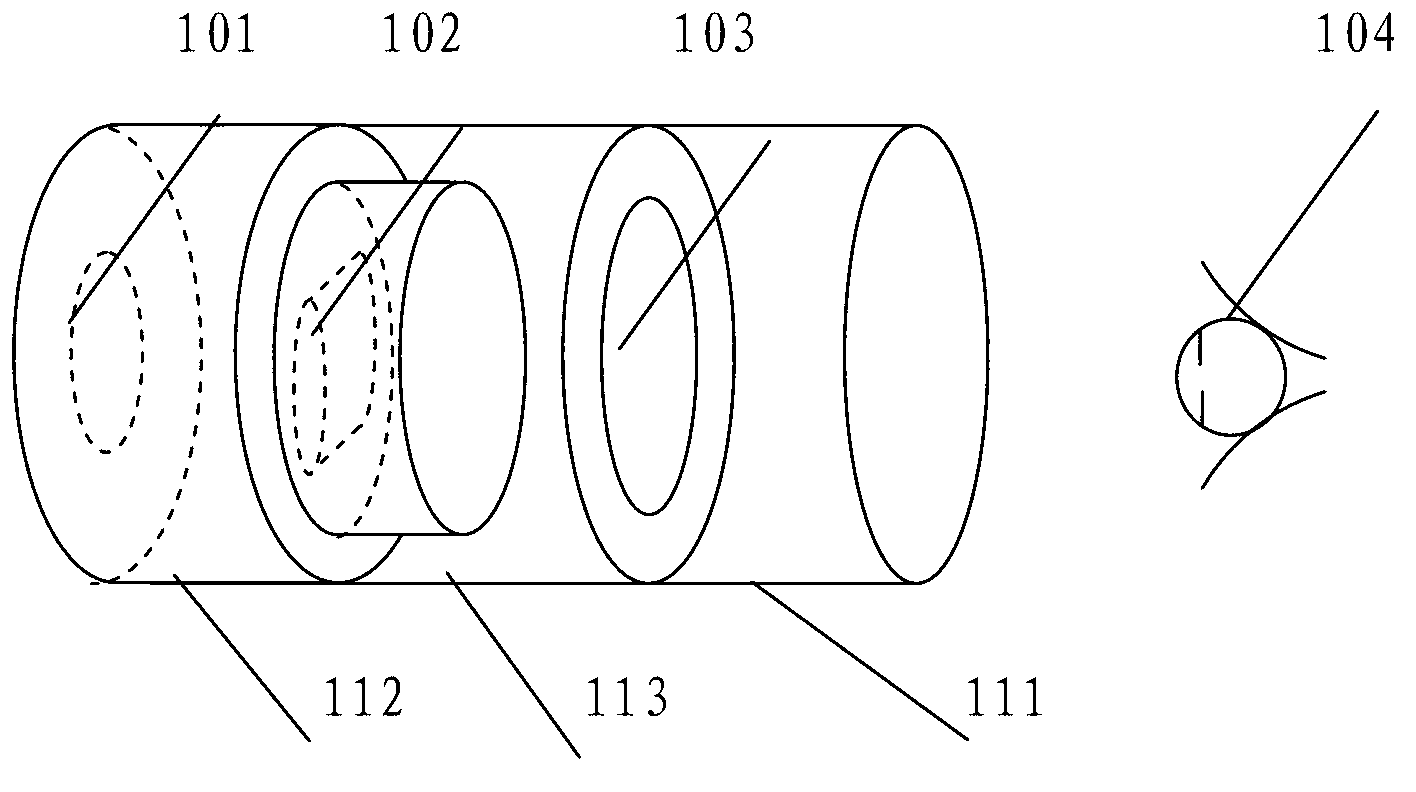Subjective optometry instrument and optometry method
A refractometer, subjective technology, applied in the field of human eye optometry, can solve problems such as complex structure, inability to be used as self-examination, and high price
- Summary
- Abstract
- Description
- Claims
- Application Information
AI Technical Summary
Problems solved by technology
Method used
Image
Examples
Embodiment 1
[0109] The marker 101 can be a picture with stripes of different orientations or radiation similar to a traditional astigmatism meter. In the description below, the radiation (marked on the marker symbol, radial) as an example.
[0110] When the marker moves to a certain position x, the marker When the lines in all directions are clear at the same time, the spherical power of the testee is D 1 =x / f 0 2 , at this time, the subject has no astigmatism or the astigmatism is negligible, and the cylinder degree is 0.
[0111] when marker When the lines in all directions are not clear at the same time, there are two positions that make the two perpendicular radial lines clear;
[0112] refer to figure 1 , during measurement, the marker 101 moves back and forth, if there are two positions where the lines in a certain direction of the radiation can be clearly seen, and the radiations in the two directions are perpendicular to each other, then
[0113] For the first position,...
Embodiment 2
[0128] Likewise, the marker 101 can be a picture, with stripes of different orientations or radiation similar to a traditional astigmatism meter. In the description below, the radiation (marked on the marker symbol, radial) as an example. This embodiment utilizes the cylindrical lens 102, and the cylindrical lens 102 and the marker 101 overlap together and move back and forth. There are also two situations:
[0129] When the subject can clearly see the marker at a certain position x All the lines in the symbol, the spherical power of the subject can be calculated according to the calculation method of the spherical power above, and it can be known that the tested human eye has no astigmatism.
[0130] When moving to certain two positions, the subject can clearly see the marker When one of the two perpendicular lines in the symbol is clear, the spherical diopter of the two places can be calculated according to the calculation method of the spherical diopter above. And it...
Embodiment 3
[0138] refer to figure 2 , shown as a specific example.
[0139] The lens 103 is fixed in the first sleeve 111 , and the front surface of the cornea of the subject's eye 104 is located at the focal point of the lens 103 . The marker 101 can also be a picture, striped lines of different orientations, or radiation similar to a traditional astigmatism meter. Radiation is used as an example in the following description. The marker 101 is fixed on the second sleeve 112, and the second sleeve 112 can slide in the first sleeve 111, and the distance between the marker and the lens can be changed by adjusting the second sleeve 112. The cylindrical lens is fixed on the third sleeve 113, and the third sleeve 113 can slide in the second sleeve 112 and rotate with the sleeve shaft as the rotation axis. Adjusting the third sleeve 113 can change the orientation of the cylindrical lens and the cylindrical lens. The distance to the marker. When the second sleeve 112 is adjusted, the thi...
PUM
 Login to View More
Login to View More Abstract
Description
Claims
Application Information
 Login to View More
Login to View More - R&D
- Intellectual Property
- Life Sciences
- Materials
- Tech Scout
- Unparalleled Data Quality
- Higher Quality Content
- 60% Fewer Hallucinations
Browse by: Latest US Patents, China's latest patents, Technical Efficacy Thesaurus, Application Domain, Technology Topic, Popular Technical Reports.
© 2025 PatSnap. All rights reserved.Legal|Privacy policy|Modern Slavery Act Transparency Statement|Sitemap|About US| Contact US: help@patsnap.com



